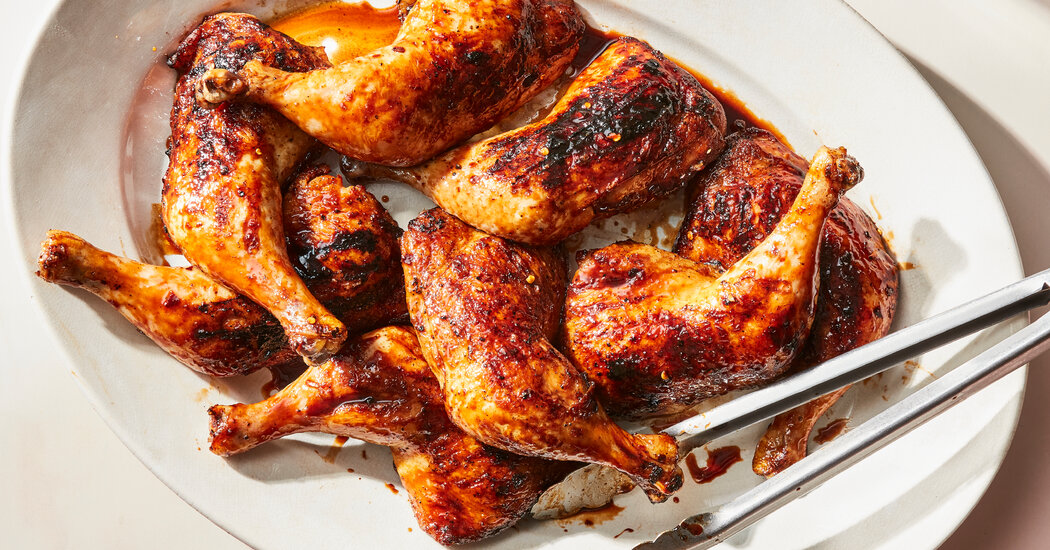
In her book “Gulp: Adventures on the Alimentary Canal,” Mary Roach explores how we taste and explains how we can perceive five main flavors, but infinite smells. “Eighty to 90 percent of the sensory experience of eating is olfaction,” she writes.
That’s why grilled chicken legs taste especially good in summer, when their smokiness mingles with the fragrance of sunscreen and ocean air, grass and beer. It’s an aroma that takes me back to church picnics and others to block parties, the sort of gatherings where you’re with your community — not necessarily friends or compatriots, or even people you like, but the humans who make life fuller and a little less lonely.
That immediately recognizable charred chicken scent transports anyone who smells it to good times — and is worth recreating. The best way is to start with skin-on pieces, ideally legs or drumsticks. As the chicken heats up, the fat in and under the skin renders, sizzles and releases the meaty haze that pulls at an urgent, primal hunger.
The trick is to lightly char the skin to a crackling dark brown, while making sure the meat is fully cooked and juicy. When the fat drips into the grill, it causes flames to lap around the chicken. If the pieces end up engulfed in live fire, they become inedible, with the skin burned to an acrid ash around cold raw meat.
Some avoid that outcome by using indirect heat, slowly cooking chicken over a part of the grill without coals or with a burner turned off. With this method, there’s no chance of flare-ups. But it also results in skin that’s soft and stretchy like a spent rubber band and meat that’s tight.
For tender skin-on chicken you want to eat, you need to grill it directly over coals or propane burners. Starting with moderate heat helps the meat cook all the way to the bone and lets the fat melt slowly so the skin ends up pleasantly thin and a little crackly. Keeping the grill covered also allows the meat to lose its rawness evenly and prevents the fire from raging up. To prepare for any persistent flames, leave a section of the grill unheated and move any pieces over it if they light up like candles.
Coating the chicken in a thin sheen of oil encourages the skin to crisp without burning it. Because fire lends its own flavor, the chicken really doesn’t need anything more than salt and pepper, but, if you want a little sweetness, savoriness and spice, you can brush on a simple soy glaze toward the end of cooking instead of marinating beforehand. (Marinated chicken tends to burn more quickly.) As the glaze heats, it caramelizes onto the skin and seeps into the meat. A final swipe of sauce after it’s off the grill gives it a sticky shine for chicken that tastes as good as it smells.



